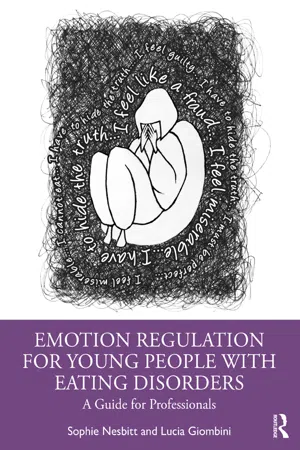Overview
Research suggests that the prevalence of eating disorders is increasing, affecting more and more young people. The overall lifetime prevalence of eating disorders among adolescent girls ranges from 3% to 13% and from 1.2% to 1.5% among boys. In girls, the lifetime prevalence of anorexia nervosa ranges from 0.3% to 2.6%, bulimia nervosa from 0% to 2.6%, and binge eating disorder from 1.0% to 3.0%.3
The age at which difficulties start tends to be lower, impacting on long term prognosis and increasing the need for differential treatments. There has also been some movement within the male/female ratio, with the number of young men diagnosed with eating disorders increasing. Whilst “binge-eating” behaviours and compensatory behaviours (e.g. purging, fasting, excessive exercise) have a low prevalence in young patients, a “continuum” between bulimia nervosa and anorexia nervosa exists, with a frequent transition from one disorder to another. Over recent years there has been an increased prevalence of eating disorders in young people alongside other psychiatric conditions such as depression, anxiety or obsessive-compulsive disorder. In addition, the diagnostic criteria as set out in DSM-V4 do not include aspects of the illness that are well known to exist, such as neuropsychological disturbances (e.g. ruminations and obsessions about weight, shape and eating and personality traits such as perfectionism and impulsivity)5.
Most eating disorders emerge during adolescence, a critical time for brain development, and malnutrition can negatively impact treatment outcomes and recovery. The biological impact of malnutrition is due not only to weight and shape concerns but is also maintained through issues of perfectionism and low self-esteem and self-confidence. Fairburn and colleagues5 have proposed a model suggesting there are common factors that are present across all eating disorders’ diagnostic categories. Understanding eating disorders in this way is referred to as the transdiagnostic approach. It is important to note that transdiagnostic approaches and disorder-focused approaches need not be mutually exclusive and that a “spectrum” model based on an impulse-control paradigm of eating disorders can be informative. We think this is particularly helpful in relation to the approach taken in this book, which thinks of eating disorders as a broader range of difficulties. In this book, we focus on thinking and emotional styles that are common in eating disorders more broadly5.
Treatment approaches
There are various treatments proposed for eating disorders. The NICE2 guidance summarises these treatments together and evaluates the evidence base for each. With regard to this, NICE2 recommends the following psychological interventions be considered for young people with eating disorders: focused family therapy for children and young people with anorexia nervosa or bulimia nervosa (FT-AN/FT-BN). This approach aims to engage the family in helping the person to recover and is a step-by-step treatment. The first step aims to build a good therapeutic alliance with the individual, their parents or carers and other family members. Step two is to support the young person to establish a level of independence appropriate for their level of development with help from their parents or carers. Finally, the third step focuses on plans for when treatment ends and on relapse prevention.
Currently, this type of approach is most commonly offered in a community outpatient setting. For many it is helpful, but some families will struggle to engage effectively in this type of treatment. In these instances, NICE2 recommends two other forms of treatment: individual cognitive behaviour therapy, which is eating disorder focused (CBT-ED) or adolescent-focused psychotherapy for anorexia nervosa (AFP-ED). These approaches aim to reduce the risk to physical health and any other symptoms of the eating disorder.
CBT-ED focuses on encouraging the young person to reach a healthy body weight through the process of healthy eating. Therapy work undertaken covers psychoeducation relating to nutrition, cognitive restructuring, emotional regulation, social skills, body image concern, self-esteem and relapse prevention. The therapy needs to be mindful of the young person’s specific development needs, whilst enhancing self-efficacy, and promoting self-monitoring of dietary intake and associated thoughts and feelings.
AFP-ED is different from the CBT-ED, as it focuses more on emotions and interpersonal processes, and how these affect the eating disorder. The therapy aims to develop a shared understanding of the young person’s psychological issues and how they use anorexic behaviour as a coping strategy and supporting the young person to find alternative strategies for them to manage stress. In later stages of treatment, issues relating to identity and independence can also be explored.
Psychological treatment for binge eating disorder in young people involves the use of cognitive behavioural self-help materials. The aim is to promote engagement in a binge-eating-disorder-focused guided self-help programme. If this approach is not helpful, group CBT-ED, focusing on psychoeducation and self-monitoring of the eating behaviour, is recommended. This approach encourages the young person to think actively about their problems and identify goals. This includes engaging in behavioural techniqu...
